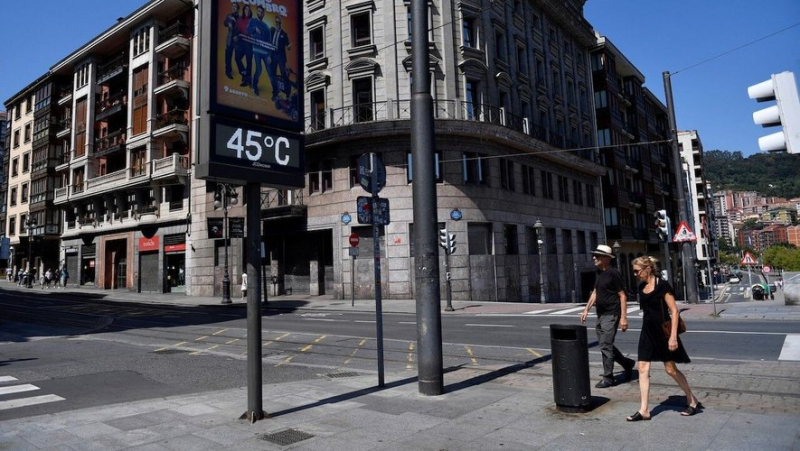Health problems, “harvest effect”, energy poverty… in the event of a heatwave, heat is not the only thing that kills

L'Espagne sort d'une vague de chaleur de 21 jours. ANDER GILLENEA/AFP
L'Espagne sort d'une vague de chaleur de 21 jours dans trois des plus grandes villes du pays : Madrid, Barcelone et Saragosse.
This heatwave episode has serious consequences for organisms not only because of the increase in mercury, explains Julio Díaz, a researcher at the Carlos III Institute on Climate Change, Health and the Urban Environment.
Heat alone does not kill ?
Apart from temperature, there are many other things that influence health in the event of heat: income level, age, socioeconomic and health conditions, the “culture of heat”…
We divided Spain into 182 regions with the same climatic behavior and for each of them we calculated the temperature at which people began to die from the heat. For some cities, it is the maximum temperature during the day that counts, for others the minimum (at night).
40°in Seville (south), it is not even the temperature that defines a heatwave. But in La Coruña (north), it starts at 26°.
"Heat kills"
Why do we say that the first heat wave is the most dangerous ?
Only 3% of mortality is attributable to heat stroke. Heat kills by aggravating other diseases: respiratory, cardiovascular, neurological, renal problems.
During the first heat wave, there are many more people likely to die than during the second, because the worst-off people are swept away by this first wave. And so on with each wave. This is what is called in epidemiology the “harvest effect”.
How is the standard of living a determining factor?
We know that in the poorest neighborhoods, the impact of heat is greater.
It is obvious that it is not the same to live in a room with three people and a single window, without air conditioning or a fan, than to have a villa with a swimming pool and air conditioning.
And it's not just having an air conditioner, it's also being able to use it. During the heat wave we just had (Editor's note: July 23-August 12), electricity prices exploded. This is called energy poverty.
Hyperthermia
What is heat stroke ?
Heat stroke is when a person is exposed to high temperatures and their body is unable to regulate this temperature. Even if you sweat, your body cannot bring your body temperature down to 37°C. Then your organs stop working normally, including your brain. Hyperthermia occurs and people can die from it.
The only group in which the impact of heat has not decreased in Spain is the 18-45 age group, because that is where most of the people who work or do sports outside are, delivery people…
“People were not prepared”
What is “heat culture” ?
In 2003, Europe experienced an unprecedented heatwave with 70,000 deaths. People were not prepared, there was no prevention plan. Now, no one doubts that heat kills.
People are adapting: between 1983 and 2003, for each degree above the reference temperature defining a heat wave, mortality increased by an average of 14%. Since 2003, it has only been 3%.
Before, elderly people would never have gone out in shorts in a city like Madrid. Elderly women were dressed in black. Now, elderly people are in shorts, with a cap, a bottle of water.
In a place where people are used to the heat, houses are adapted. People don't go out after 3 p.m. That's why there is a siesta in Spain in some places. In Andalusia (south), the villages are white, the streets are narrow so that the wind can circulate well…
We see that in Paris, more and more gardens are being installed on roofs. Los Angeles is painting a large part of the asphalt white.




